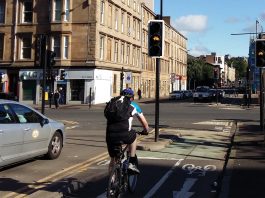Road accidents cost Europe €280bn annually – the European road assessment programme is working towards a Europe free of High Risk Roads.
Following the success of the Euro NCAP programme in the 1990s in raising vehicle safety standards, European Ministries, road authorities and NGOs together created in 2002 the first Road Assessment Programme, EuroRAP. In 2005, EuroRAP created iRAP, the International Road Assessment Programme, to act as an umbrella for regional RAPs around the world and act as a charitable Trustee for the protocols. The continuous improvement of these protocols has been made possible by global philanthropy, multilateral banks, international institutions, governments, NGOs, motor and roads industries and individuals. RAP metrics are recommended for use by the United Nations (as RAP metrics is a UN Target 3 and 4), World Health Organisation, and FIA Foundation and other leading institutions. They are applied in projects by the World Bank and regional development banks worldwide including the European Investment Bank and EBRD in Europe. Every year the inclusion of RAP metrics are reported in the 2018 WHO Global Road Safety Status Report. The European road assessment programme (EuroRAP) provides tools and systems to help authorities, funding agencies, civil society associations, research and training institutes and other non-government organisations across Europe to make their roads safe. The association manages the application of the global Road Assessment Programme protocols in Europe.
The Innovation Platform speaks to EuroRAP Secretary-General Lina Konstantinopoulou after the new declaration of the UN Swedish Ministerial Round table and how she envisions safer roads in the next UN decade.
What are some of the main “problem areas” in terms of European roads? Is there a pattern in terms of the high risk and certain road features?
Between 2001 and 2010, the number of road deaths in the EU decreased by 43%, and between 2010 and 2018 by another 21%. However, 25,100 people still lost their lives on EU roads in 2018 and about 135,000 were seriously injured. This is an unacceptable and unnecessary human and social price to pay for mobility. The yearly cost of road crashes in the EU has been estimated in a new study to be around EUR 280 billion, equivalent to about 2% of GDP. Almost half of road victims are vulnerable road users, 25 % were on two-wheels (14 % motorcyclists, 8 % cyclists and 3 % moped riders) and 21 % were pedestrians. The breakdown of fatalities also shows that 8 % occurred on motorways, 37 % in urban areas and 55 % on rural roads.
Can you give us a brief overview of the protocols that the EuroRap programme implements?
EuroRAP is the ‘gatekeeper’ of RAP protocols in Europe ensuring quality and consistency in applying the RAP protocols nationally and advocating for safer roads. EuroRAP software, systems and specifications are free to air subject to the simple quality and consistency rules necessary for benchmarking, investment appraisal and research. EuroRAP provides general advice and support on the use of these. EuroRAP also provides advice on procurement and identification of suppliers, and on strategies for subsequent analyses of survey data, including maintenance-related information.
The RAP protocols that measure the risk of roads that are in operation using two protocols. The first uses a Proactive approach which is based on a visual examination of « in-built safety » of roads. This safety rating is called the Star Rating. The second protocol uses a Reactive approach using reported crashes and traffic. The most commonly used mapping is the map showing the risk individual users face as they turn from one road to another. However, mapping of crash density and crash costs is also used.
The Commission has already delivered concrete measures on vehicles and infrastructure safety. The requirements of the revised Road Infrastructure Safety Directive (RISM) are very familiar to EuroRAP members and accredited suppliers who have carried RAP assessments in Europe. Infrastructure risk mapping will be carried out for all motorways and for primary roads, and vulnerable road-users will have to be systematically considered in all safety assessments, audits and inspections till 2024.
To address the global road safety crisis, UN Member States have agreed on 12 Global Road Safety Performance Targets to guide institutional action. With the support of the UN Road Safety Fund, the “Ten Step Plan for Safer Road Infrastructure” is designed to provide countries with a proven step by step process to build national capacity and achieve Target 3 and Target 4 in relation to Safer Road Infrastructure. EuroRAP is creating national programmes at EU level in partnership with National authorities and private motorways.
EuroRAP encourages innovation and partnerships to help make this vision a reality. Innovation is governed by the iRAP Innovation Framework. Some key innovations in pipeline are ‘Ai-RAP’ and ‘ITS Rating’. Ai-RAP, the ‘accelerated and intelligent’ data collection, captures the advances in Artificial Intelligence (AI), machine learning, vision systems (street and sky), LIDAR, telematics and other data sources to deliver critical information on road safety, crash performance, investment prioritisation and the Star Rating of roads for all road users. Whereas in terms of ITS and C-ITS rating, the use of a range of ITS solutions is helping to reduce crash rates on high-standard expressways and motorways.
Star Rating for Autonomous Driving (SR4AD) is an enhanced module to assist authorities in assessing the readiness and safety of road infrastructure. In particular, it will help measure how well road supports driver assistance technologies and increasing levels of autonomous vehicles. This is supported with ongoing work of the SLAIN project. SLAIN is an EC CEF project which focuses on supporting both the RISM Directive as well as DG MOVE CCAM Platform of the European Commission.
Do you think enough is being done in terms of providing and maintaining safe roads across Europe? What do you think should be done to improve the overall standard across Europe?
The ‘Decade of Action’ encouraged countries to implement good practices in five pillars including safer roads and mobility and proposed indicators such as global monitoring. UN Targets 3 and 4 include ensuring that all new roads are built to a 3-star or better standard for all road users (Goal 3), and more than 75% of travel is on the equivalent of 3-star or better roads for all road users by 2030 (Goal 4).
To see the impact of Road assessment programmes across Europe and the globe is a sign of how we can partner together with road authorities and financial institutions (such as the World Bank and European Investment Bank) and share success in our common efforts to eliminate road death and injury.
Our investments in road infrastructure will see us reach an expected 75% of travel on 3-star or better roads by 2020 and approaching 100% of travel by 2025. Achieving more than 75% of travel on 3-star or better roads by 2030 will save an estimated 467,000 lives every year and 100 million lives and serious injuries. However, it is important to note that halving deaths and serious injuries will not be achieved with a “business as usual” approach. It requires serious focus on tackling busy high-risk roads. Being critical, we need to treat the still 1-2 star roads for both pedestrians, bicyclists, vehicles not only at the TEN-T level and primary roads but also cities.
In five 10 years’ time, what do you hope would change and/or been developed across European roads in terms of increasing safety and decreasing risk?
Tackling safer roads requires a holistic approach and shared responsibility in the same way as the Safe system approach. In a perfect world, all roads would be 5-Star (i.e. the safest roads) for all groups of road users. 3-Star or better roads for all road users presents a realistic target for national and regional governments and road authorities to adopt.
However, we need a supportive environment for road safety that spans across multiple sectors if road safety programmes are to be successfully implemented and deployed Europe’s mobility landscape is continuously changing and stronger coordination between countries is needed in order to reduce deaths and injuries. Working closely with our partners is essential so that we can provide a space where countries can exchange knowledge.
More people need to be trained in countries to deliver, monitor and evaluate a systems approach to improve safe infrastructure. An example is the project ‘RADAR’ where in the 12 Danube countries they are exchanging best practices and training on road safety practices and engineering.
Street imagery is usually used to support the assessment of the safety characteristics of roads. This already happens for the attribution of star ratings under RAP-road assessment programmes. The next generation of star-rating programmes will most likely benefit from more frequent and broader collection of image data, as well as automated image analysis from vision-based ADAS technologies and through mass vehicle fleet sourced data. These innovations will facilitate the planning of road safety investments as well as the monitoring of results. Over the next 10 years, and considering the new trends in mobility (urbanisation and smart cities, connected and automated mobility, new road safety assessment practices using machine vision systems, sensors and robotised equipment and drones and working on future research on sustainability impact and road safety), EuroRAP will develop the future research priorities in order to envision Safer Roads during 2030-2050.
Lina Konstantinopoulou
Secretary-General
European Road Assessment Programme / EuroRAP
lina.konstantinopoulou@eurorap.org
Tweet @EuroRAP
Tweet @Lina_Konst
www.linkedin.com/company/eurorap-aisbl/
www.linkedin.com/in/lina-konstantinopoulou-8b082612/
https://www.eurorap.org/
Please note, this article will also appear in the first edition of our new quarterly publication.









